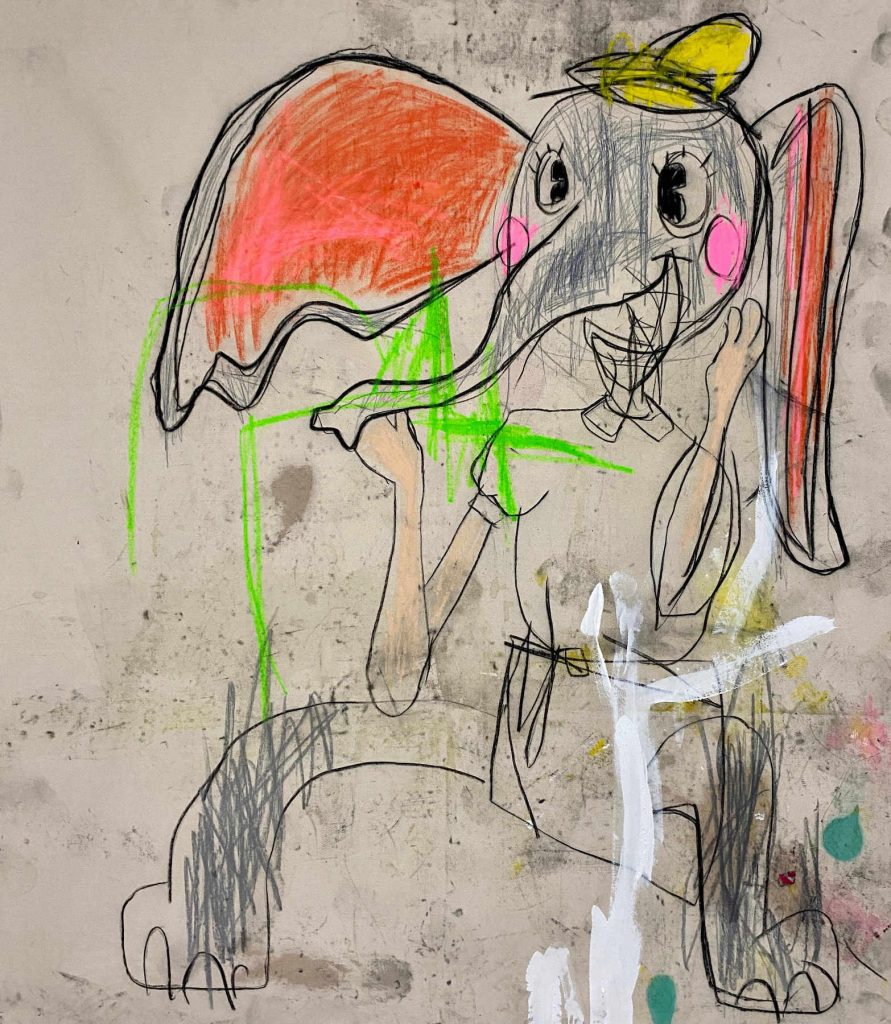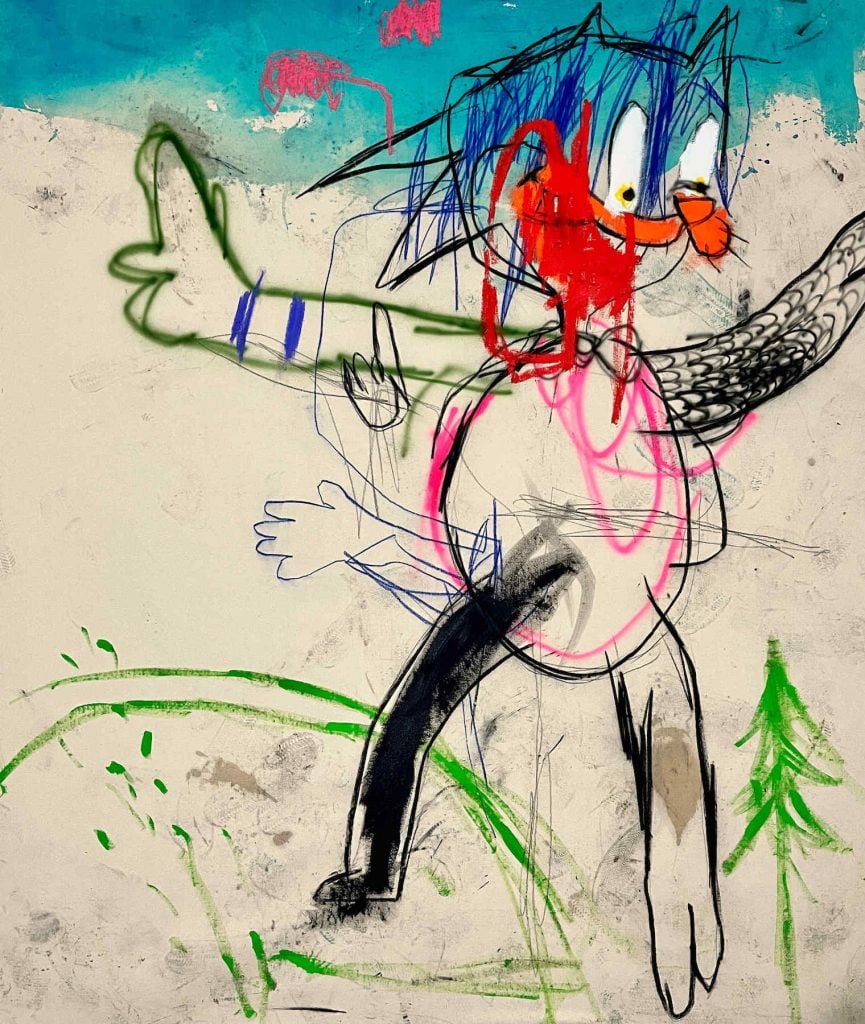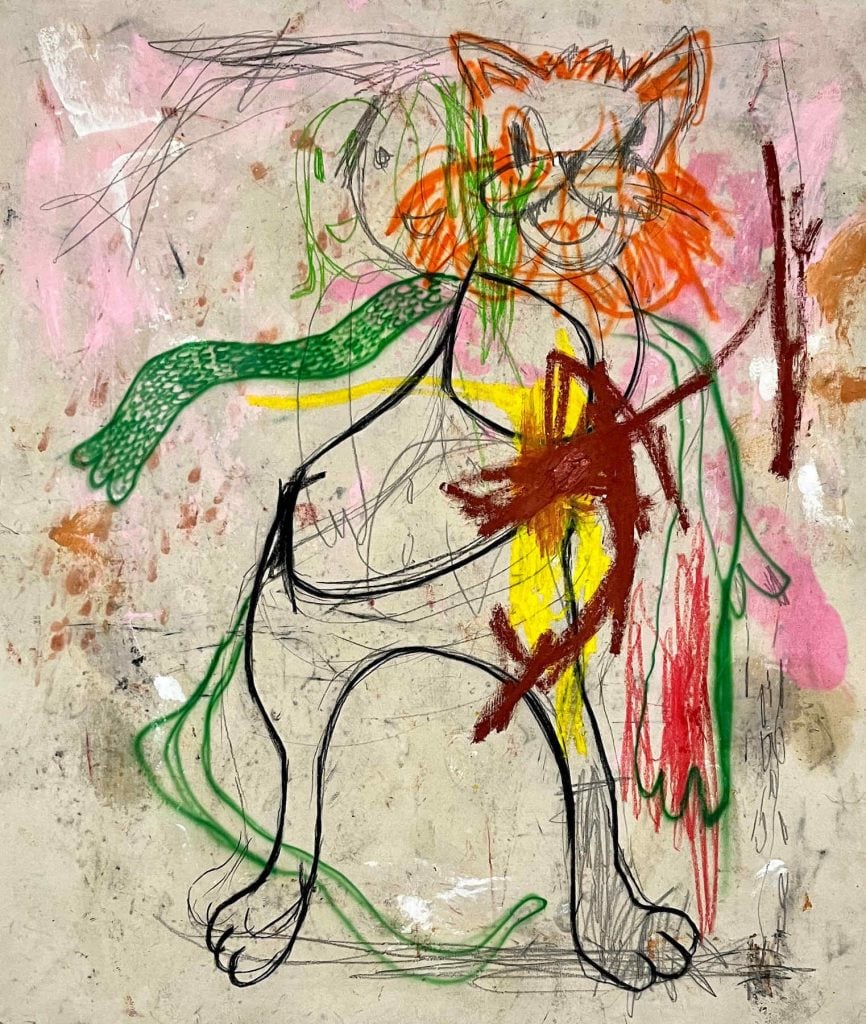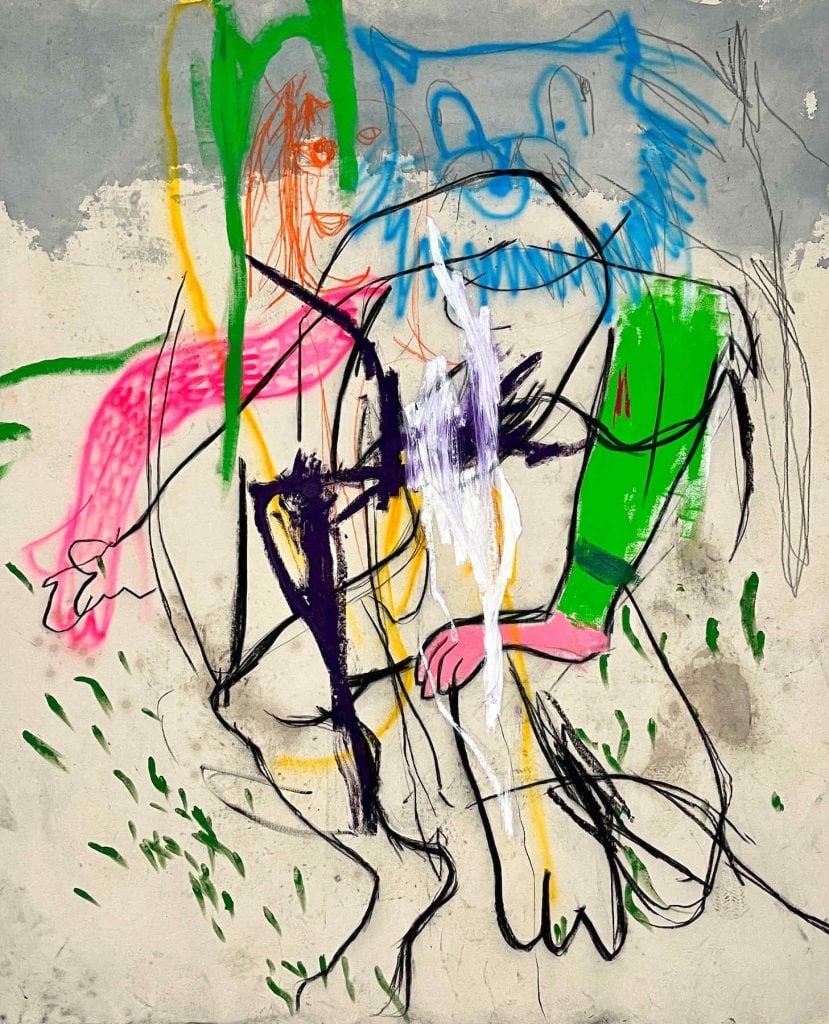Gallery Network
7 Questions for British Artist George Morton-Clark About Not Having a Backup Plan and How Instagram Freed Him to Paint
The British artist foregrounds familiar pop-culture characters within a distinctive and direct gestural style.

The British artist foregrounds familiar pop-culture characters within a distinctive and direct gestural style.

Artnet Gallery Network

British artist George Morton-Clark’s paintings are filled with familiar cartoon characters painted energetically anew—Dumbo, Tweety Bird, and many others look provocatively fresh in bright colors rendered in visceral, sprawling lines.
This juxtaposition of pop-culture imagery and gestural abstraction is oddly captivating in Morton-Clark’s hand, creating tension between the perceived simplicity of the characters themselves and his graphic linework. Adding to this sense of immediacy, the artist is known for working directly on natural, unprimed canvases.

Artist George Morton-Clark, 2022. Courtesy of Eternity Gallery.
“To appreciate his work properly, one must take in the contents splayed upon the entirety of the canvas, instead of looking for a hidden meaning behind them,” Rolf Lauter, former chief curator of the Museum für Moderne Kunst in Frankfurt, has written of Morton-Clark’s works. “Rather than presenting a grand, elaborate theme about our time, and trying to integrate himself into some section of art history, he presents pieces that resemble comfortable and fun times spent laughing and talking to close friends,” Lauter notes.
The artist, who is represented by Miami’s Eternity Gallery, has found a growing collector base, too. In June of this year, his work Vintage Minnie (2019) was sold at K Auction in Seoul for over $96,000. Just recently, we caught up with the artist who shared his artistic inspirations, why he loves his old brushes, and taking a moment to balance work and family life.
Tell us a little bit about your background and how you became an artist?
I have been drawing since childhood and always wanted to be an artist. I was just unsure how I would make it a reality. I decided to become an animator because I had always been interested in cartoons and ended up doing a three-year degree in animation, only to realize it was definitely not the path for me. I went back to drawing large paintings of characters I had created. The art world landscape changed in my late 20s with Instagram, and it became more accessible, and I could make a living from painting.
Who are the artists who have most influenced you?
The list is very long, as I will go through phases of adoring different artists—Cy Twombly, Albert Oehlen, Paul McCarthy, Philip Guston, Christoper Wool, George Condo, and Jamie Hewlett, to name a few. I tend to change weekly, looking closely at their work, like music.

George Morton-Clark, There Are Things I Want to Say About People in This Room (2022). Courtesy of Eternity Gallery.
Many of your works incorporate elements of pop-culture cartoons. What do these references mean?
I have some inherent feelings about drawing characters, and I cannot tell you why—it is just something I need to do. I just love them! It is the main focal point of how I paint, and then everything is formed around the character I choose. It is how I structure my paintings. I feel it gives the painting purpose, which is the main point. I paint what I would like to see and what I think works, to satisfy something inside of me and to make something I hope has not been done before.
Can you tell us about your process? When and where do you work? Do you work on one piece at a time? Do you come to work with a fully formed idea, or do you improvise in the making?
Being an artist is a 365-day job, and you are never switched off. I am always thinking about work and what I can do next. Maybe there is some fear in that, not knowing as an artist if you have something next? I will sit and draw for periods until I feel ready to paint. I didn’t use to do this and would draw straight to canvas and see what ideas formed there. I realized this was not a productive way to work, as I can now develop my ideas further than before. I will still improvise when working, but I will have the skeleton to work from.

George Morton-Clark, I Feel Sorry for the Rewind Button (2022). Courtesy of Eternity Gallery.
What’s the most valuable tool in your studio?
Probably my sketchbook, or even my old brushes. I get pretty attached to brushes I have had for a while. You know precisely how they will behave when using them and become an extension of you.
Tell me about your relationship with Eternity Gallery? How long have you been showing with them? What do you have coming up?
I have been working with Eternity Gallery for about four years. For the moment, I am taking a bit of a hiatus as I am building a house and studio in the country; along with getting married and having two small children, it would be impossible to do any shows. So I am working as much as possible to push my practice and prepare for 2023. I am slowly cooking things!

George Morton-Clark, Fairy Liquid Never Works for Bubbles (2022). Courtesy of Eternity Gallery.
What do you want viewers of your work to take away from it? What do you want the experience of viewing your work to be?
To be honest, I just want the painting to fill them with joy and brighten up their lives. I do like my pictures to have a slight edge to them. I also want them to command attention in the space they are placed in. I don’t want my paintings to sit in the background and someone to think, “Oh, that’s nice.” I want it to grab them, hold their attention, and keep bringing them back.
Tell us what you’re working on now? What’s influencing your work lately?
I am working for my galleries at a much slower pace than I have been accustomed to because of everything going on in my personal life. Building a house is a full-time job in itself! This year has also taught me that I should work at this pace and not rush as much as I used to. This way, I can sit with my work longer and realize if it needs more done to it or not.
If you weren’t an artist what would you be?
Luckily enough, I am! And thankful every day that I make a living out of it. That was my first goal: to make a living out of being able to do what I love daily. Everything else is a bonus. So to answer your question, I never had a plan B!
Discover more of George Morton-Clark’s work with Eternity Gallery on the Artnet Gallery Network.